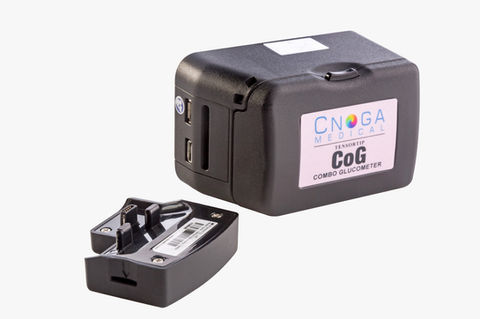CoG - Hybrid Glucometer
Meet The World’s First Hybrid, Non-Invasive Glucometer

Medically Tested & Clinicly Proven.
CE Approved. FDA Pending
Trusted & Loved by Top Industry Experts
“… I must conclude that this is the most accurate performance of a non-invasive device technology for prediction of blood glucose that I have seen so far. In fact, this device represents a major improvement in non-invasive glucose prediction technologies!”.
Prof. Andreas Pfützner, M.D.,Ph.D
From The Press
Read What Others Think About Us

New fingerprick-free glucose meter takes the “Ouch!” out of diabetes care
Today marks World Diabetes Day, a date chosen in tribute to Dr. Frederick Banting, co-discoverer of insulin, who was born on November 14, 1891. While the discovery of insulin made survival with diabetes possible, the disease itself continues to spiral out of control around the world…

To Mark World Diabetes Day, Israeli Company Promotes Needle-Free Glucose Test
Today marks World Diabetes Day, a date chosen in tribute to Dr. Frederick Banting, co-discoverer of insulin, who was born on November 14, 1891. While the discovery of insulin made survival with diabetes possible, the disease itself continues to spiral out of control around the world.

Ein Start-up aus Caesarea hat ein Gerät zur schmerzfreien Überprüfung des Blutzuckers entwickelt
Ein Diabetiker muss sich vier- bis fünfmal in den Finger stechen – jeden Tag, sein Leben lang. Mit dem Tropfen Blut misst er seinen Blutzuckerspiegel, um die nötige Menge des Insulins zu bestimmen. »Das sind oft mehr als 100.000-mal Schmerzen und Verletzungen«, sagt Andreas Pfützner vom »Pfützner Science und Health Institut«
The Future Is Finally Here.
Measure Instantly. Anytime, Anywhere. Up to 90% Less Pricking.
Hybrid Non-invasive & Invasive device
Instant glucose and HbA1c measurement
A personalized device that constantly adjusts to your lifestyle
Better tracking of lifestyle factors can impact glucose level trends
Clinicly tested and CE approved
What Customers Say.











